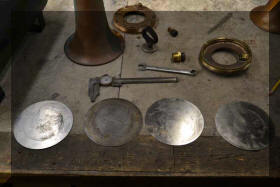 |
Ok, I have been at it
again.
All the diaphragms are
identical
|
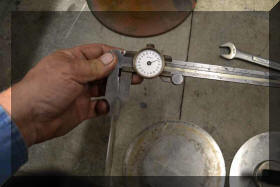 |
with a thickness of .032
|
| They are not bronze, and
may be a low grad of stainless as they show very little
deterioration compared to the brass on the whistles. I can however
pick them up with a magnetic and you should not be able to do that
with stainless. |
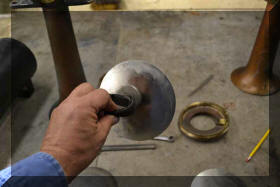 |
|
|
I run these diaphragms
through the buffer, sure am having a problem waiting for the new
buffer, being careful not to get them hot so as not to change the
hardness or warp them. The tree on the right came out of the short
whistle and the one on the left came out of the longer one. |
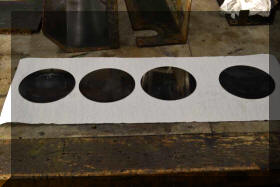 |
|
 |
Here are close ups of the
there from the short whistle.
|
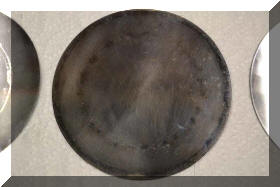 |
 |
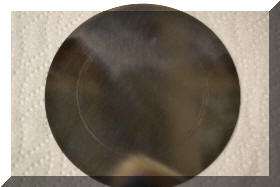 |
And one of the one that
came out of the longer one
|
|
I tried two diaphragms in
both whistles, they worked but the longer on now had symptoms like
the shorter on had (did not blow right away.
I tried one in both
whistles and they seemed to like it. As this will be a vehicle mount
unit and the compressor will be small, with two storage tanks, I
think I will go with one diaphragm in each horn and reduce the
pressure.
The similarities’ between
the Cunningham and Federal Signal
Corporation continue. Note the two Cage Rings. They will screw into
either whistle or function in either whistle. |
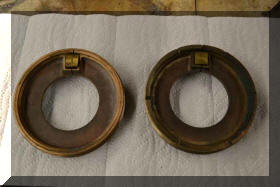 |
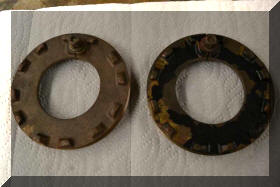 |
|
There are differences however, below
is the one that came off the Cunningham. Note that the outer ring is
smooth, and when screwed onto the whistle does not need to be as
tight as the one that came off the Federal Signal Corporation for it
to function. |
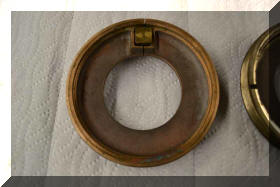 |
|
|
The cage ring of the
Federal Signal Corporation whistle
has slot cut in the ring surface, I am wondering if they were put
there for drainage as by chance the did line up with the weep hole
on the horn when it was tighten down. This ring needs to be tighter
than the one from the Cunningham. The Cunningham would function with
its ring tightened by hand where the Federal Signal Corporation ring
needed to be tightened about 1/8 turn more than hand tight to get
the diaphragm to seal. This was true switching both rings on
both horns. This 1/8 turn past hand tight does coinside with
instructions for installing diaphragm and adjusting whistle, it
states “ screw up the ring until the diaphragm just touches the
whistle mouth without tension. Screw up an additional one-eighth to
one-quarter turn and lock” |
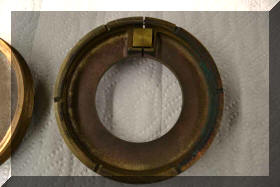 |
|
|
o you have answered the
“S” and “F” question. The Cunningham horns have an "S" for screwed
connections an "F" for flanged.
These remain;
I do not know how many
diaphragms belong in each whistle, but through experimentation I
think I will go with one in each, unless someone comes up with a
reason not to. I would still like to know how they would have come
from the factory.
Why are the Cunningham
and Federal Signal Corporation
almost identical (parts are interchangeable).
Well it is now
11/04/2012. The first buffer I purchased off of e-bay was defective.
The seller would not respond. I had to open a PayPal claim and wait
their required wait time to get a settlement. I won the case, had to
ship it back for a refund and then purchase a second one from
Grainger. It does not have the HP that I would like, but have
started to make some progress |
 |
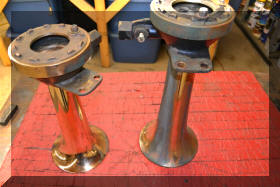 |
|
|
|
|